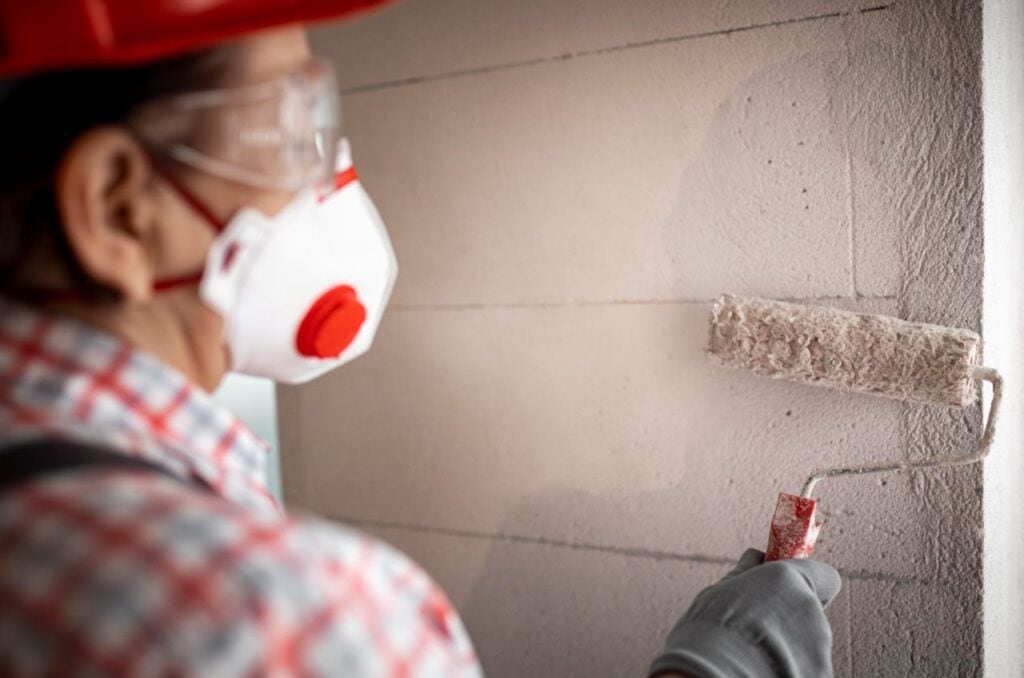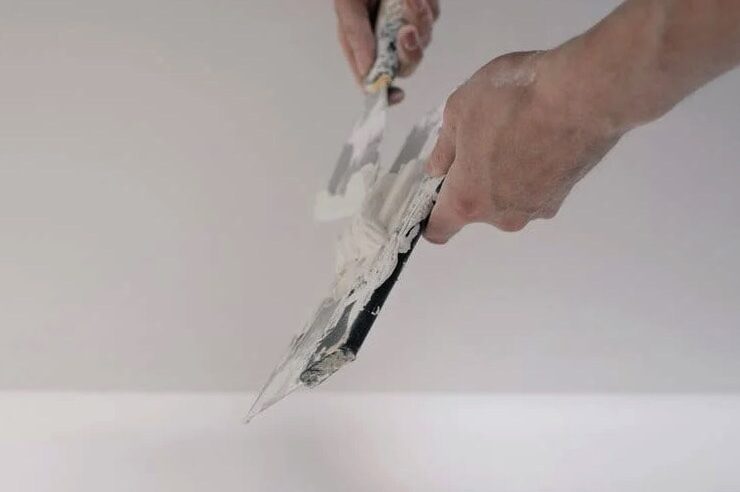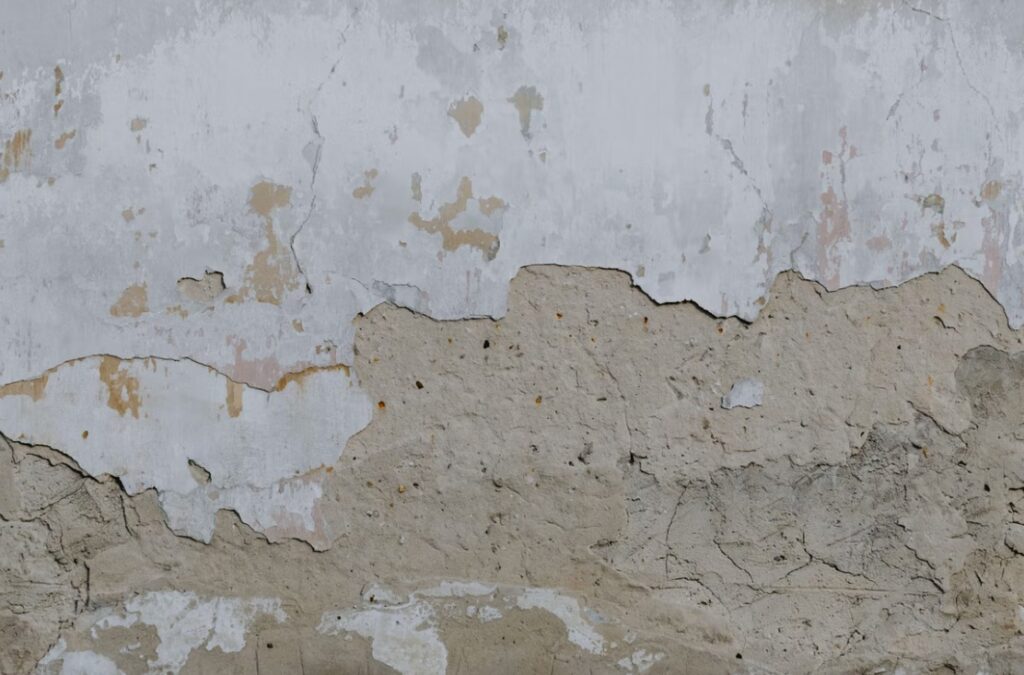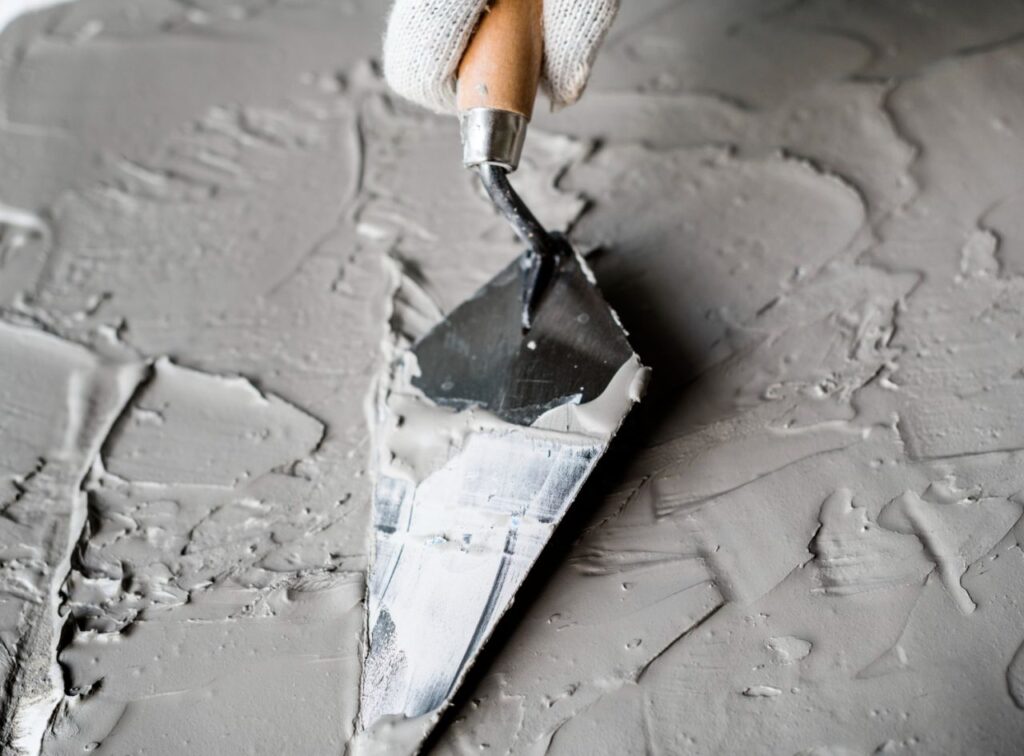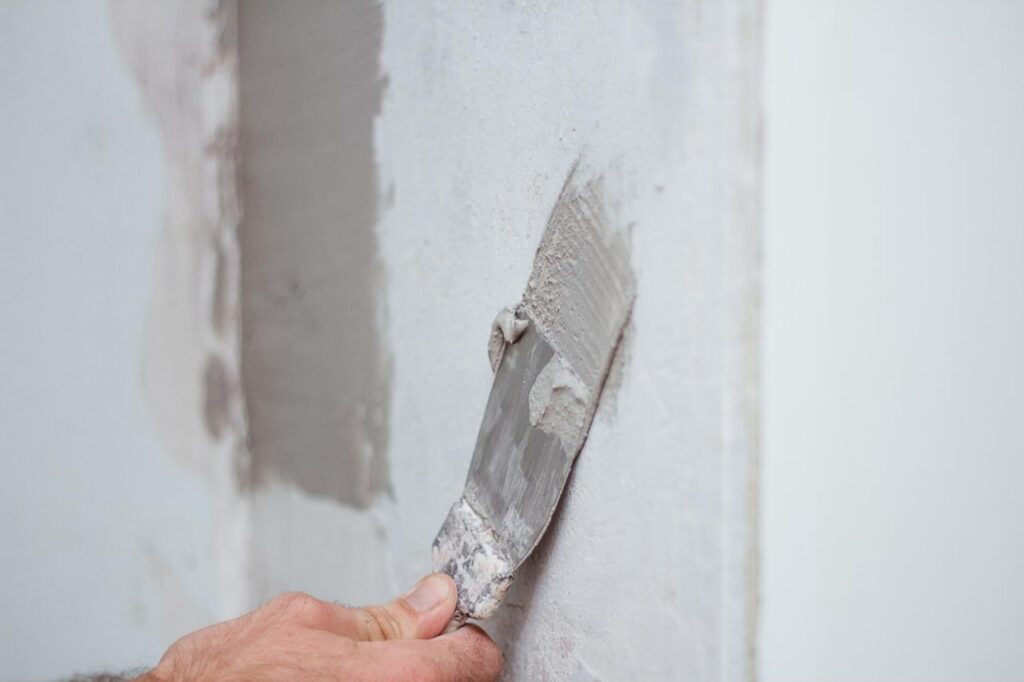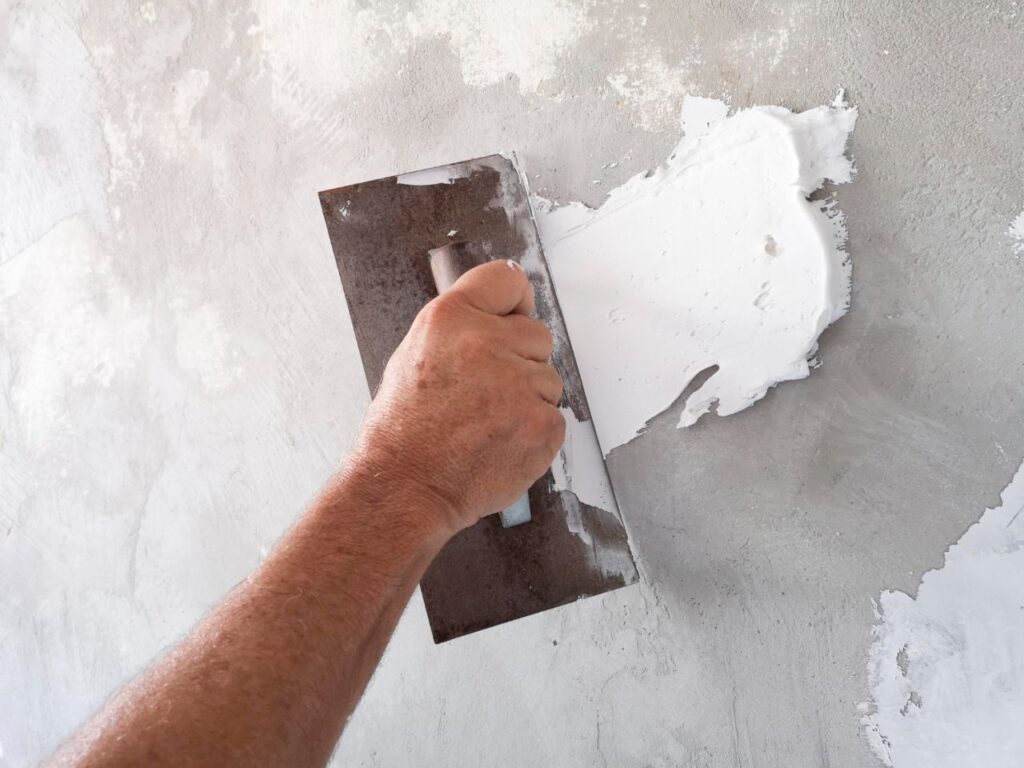Interior walls are best done in plaster. Builders have relied on plaster for decades.
Plastering is an old technique used to hide imperfections on walls. Plastering is a great technique to give a building a facelift and shield it from pests and moisture.
Plastering the interior of a structure is crucial because it serves both practical and aesthetic purposes. The market is flooded with different plastering options, making it difficult to narrow it down to the best one.
We have developed a list of the top interior plastering options to save you time and effort. We can meet your needs in terms of longevity, aesthetics, and sustainability. Keep reading to learn about the best plastering methods that may make your home more attractive and practical.
What are the Different Plastering Solutions?
Interior plastering solutions often include several essential components. For starters, they're made to be slapped up on walls and ceilings with no effort thanks to their uniformly smooth and constant texture.
They're made to dry rapidly and uniformly, too, so there's less chance of cracking or other damage as the plaster sets. In order to ensure that the plaster can endure normal use without weakening or crumbling, many interior plastering solutions include additives or other compounds that strengthen the plaster.
Many contemporary plastering solutions are made to be environmentally friendly, making use of sustainable or recycled materials to lessen their impact on the environment and promote resource conservation.
In general, the best plastering option for interior plastering will be determined by a number of parameters, such as the nature of the project, the available resources, the schedule, and the aesthetic and functional goals of the completed plaster.
Plastering an interior wall can be done with a variety of different plastering solutions. Some of the most typical examples are as follows:
Gypsum plaster
In most homes, this is the kind of plaster used. Gypsum powder, water, and other ingredients form the basis of this compound. Plaster made from gypsum is simple to use, dries rapidly, and can be sanded to a smooth finish.
Lime plaster
The basic ingredients of lime plaster are lime, sand, and water.
It has been used for millennia as a standard plastering material. Lime plaster is a good insulator and allows air to circulate. It is frequently employed in the preservation and renovation of historical structures.
Plaster formed from lime and sand is called lime plaster. In moderation, it has its uses.
You can use this mixture as either a topcoat or an undercoat. When lime plaster dries, it contracts. Lime plaster is durable and is well-praised for its capacity to protect centuries-old structures. When repairing masonry, lime plaster is your best bet.
Cement plaster
Plaster constructed from cement, sand, and water is called cement plaster.
Plastering using this material is a great choice for hallways and stairwells because of its strength and durability.
Cement plaster is versatile and can be used both indoors and outdoors.
Grey powder cement, water, and sand are the main components. You can use this combination to fill up gaps between solid walls and hollow blocks.
Cement mixing calls for the expertise of a mason. Cement mixture walls inside the house can be plastered with this.
Clay plaster
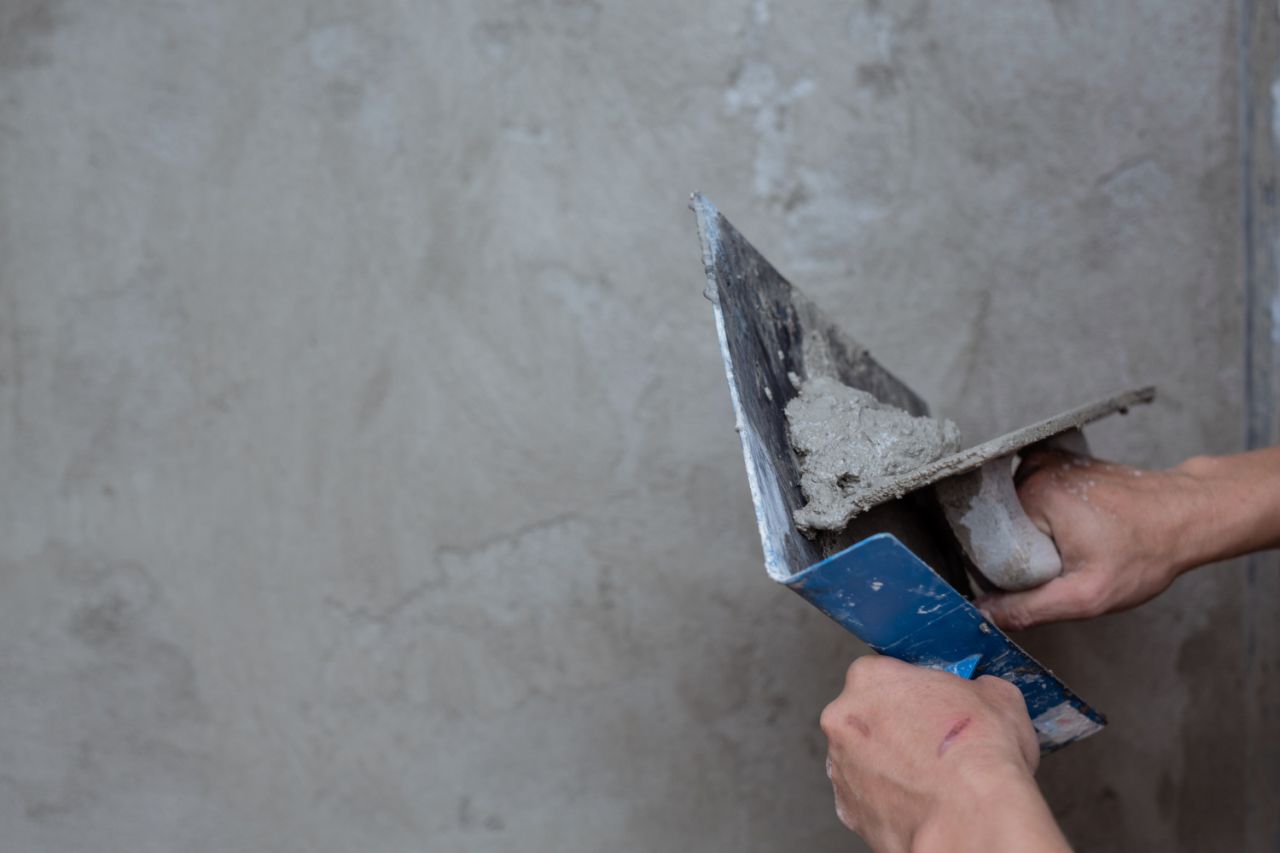
The ingredients for clay plaster include clay, sand, and water. It's a green, eco-friendly plastering option that doesn't harm the environment and works well as an insulator. Eco-friendly homeowners and people concerned with the environment frequently decorate their dwellings using clay plaster.
Synthetic plaster
The current plastering material known as "synthetic plaster" is a composite of synthetic polymers and various additives. It may be used on a wide range of surfaces and is quite simple to implement. Commercial and contemporary residential construction frequently employs synthetic plaster.
Which Type of Plaster Is Best for Interior Plastering
Many varieties of plaster are available for use when finishing an interior.
Because of their individual qualities, they can be used in many contexts. Nonetheless, gypsum plaster is clearly superior to the other types for the vast majority of interior plastering projects.
Plaster of Paris, often known as gypsum plaster, is a white powder that is manufactured from gypsum. When combined with water, it creates a paste that may be applied to surfaces like walls and ceilings.
Because of its various advantages, gypsum plaster is frequently used for interior plastering.
Gypsum plaster's simplicity of application is one of its primary selling points. Its convenience in both preparation and use has made it a go-to material for do-it-yourselfers. It also dries rapidly, allowing walls to be painted or papered shortly after application.
Gypsum plaster is advantageous since it reduces stress on structural elements like walls and ceilings because of its lightweight.
When plastering over old walls, this is very crucial. In addition to its many other uses, gypsum plaster is an excellent insulator that can save homeowners money on their heating expenses without sacrificing their comfort.
Because of its resistance to fire, gypsum plaster is another material that can be used for interior plastering. As a result, it can act as a firebreak in the event of a house fire. In addition, it is safe for use in households with children and pets because it is non-toxic and does not give out any dangerous fumes or gases.
Gypsum plaster has a variety of possible textures and finishes. A smooth, even finish can be achieved by applying it in thin coats, while a textured look can be achieved by applying it in thicker coats.
Its adaptability allows for a vast variety of aesthetic possibilities.
When it comes to interior plastering, gypsum plaster is by far the superior option. Homeowners and business owners alike favour it because of its convenience, portability, low weight, insulating qualities, fire resistance, and versatility. Gypsum plaster is a great option for interior plastering during home renovations or new construction.
How to Make the Most of Gypsum Plaster in Your Home
Plaster of Paris, or gypsum plaster, is a common building material used for interior walls. Its many advantages include its low maintenance, high adherence, and silky smoothness. Here are some pointers for getting the most out of your gypsum plaster while constructing indoor walls and ceilings:
Proper Surface Preparation
Gypsum plaster requires a clean surface free of dust and dirt before it can be applied. Applying a primer or sealer coat may also be necessary for optimal adherence.
Mixing
When preparing gypsum plaster, be sure to strictly adhere to the directions provided by the manufacturer. The consistency and strength of the plaster can be compromised by over- or under-mixing. Prepare only what you will use, then use it within the allotted time.
Application
Use a trowel or a plastering machine to apply gypsum plaster in thin layers. Plaster can crack or shrink if too much is applied at once. Depending on the desired thickness of the plaster, you may need to apply additional applications.
Finishing
The plaster needs to dry completely once it has been applied. Once the surface is dry, you can sand it down to a smooth finish. Adding texture or colour for aesthetic purposes can also improve the look of your walls and ceilings.
Gypsum plaster can be used as a decorative coating for walls and ceilings inside a building. The manner of application and the desired aesthetic dictate the choice of finish. Common gypsum plaster finishes include:
Smooth finish: This sleek and polished look is why smooth finishes are so popular in contemporary designs. Plastering requires using a trowel to spread a thin coat of gypsum plaster and smooth it out.
Textured finish: Whether with a sponge or a roller, gypsum plaster can be textured to provide a wide range of looks. This is a terrific choice for enhancing the aesthetic appeal of a room.
Sand finish: To get a sand finish, sand is added to the plaster mixture before it is applied to the wall. It's commonly used to achieve a rustic or natural appearance thanks to the rough, grainy texture it produces.
Venetian plaster finish: A Venetian plaster finish is achieved by adding multiple coats of gypsum plaster to provide a smooth, marble-like appearance. This sophisticated appearance is difficult to accomplish, but well worth the effort.
Maintenance
Although gypsum plaster is strong and long-lasting, it still needs regular upkeep. Remove dust and dirt from the surface on a regular basis, and make any necessary repairs to keep it from cracking or peeling.
Plastering your interior walls and ceilings with gypsum plaster will provide a smooth and aesthetically pleasing surface. You can get the most out of gypsum plaster and make sure the end result is of high quality if you follow these guidelines.
Gypsum plaster is easily harmed by water and moisture, thus it's best to keep it dry as much as possible. The use of exhaust fans in the bathroom and kitchen, as well as avoiding condensation by limiting indoor humidity, can all help.
Gypsum plaster may be kept in pristine condition with routine cleaning. Dust and debris can be removed from the plaster by using a soft bristles brush or a vacuum with a soft brush attachment. Don't use anything that could scratch or harm the plaster, such as abrasive cleaners or tools.
Any damage to the gypsum plaster, such as cracks, chips, or holes, should be fixed as soon as possible. A joint compound can be used to repair minor damage and then sanded smooth, but more extensive repairs may necessitate the assistance of a specialist.
Avoid hanging anything too heavy on walls that are made of gypsum plaster, since this could crack the plaster and need costly repairs. Hang pictures on gypsum plaster walls with picture hangers or anchors made for that material.
The gypsum plaster can be protected from deterioration and made easier to clean by applying a sealant. To properly seal gypsum plaster, use a sealer made for that purpose and apply it as directed.
If you follow these guidelines, your gypsum plaster should last for many years and continue to look great.
What does an Expert say about Gypsum Plaster?
Gypsum plaster is highly recommended by professionals due to its many advantages.
Because of its high fire resistance, gypsum plaster is often used in high-risk areas like kitchens and fireplaces. Its excellent acoustic insulation qualities make it an excellent material for use in soundproofing walls and ceilings.
Gypsum plaster is also extremely sturdy and can take a beating without breaking.
Due to its durability and inability to crack or shrink, it is frequently used in public spaces. Gypsum plaster is versatile because it can be sculpted into different forms and given different surfaces. Because of this, it's a flexible material with many potential uses.
Gypsum plaster is an eco-friendly building material. It uses recyclable, all-natural materials in its construction. In addition to being safe for both people and the environment, it is also non-toxic and does not release any harmful chemicals.
Gypsum plaster can last for a long time with the right care, but experts advise doing so. Gypsum plaster needs to be kept dry since exposure to moisture can cause it to degrade. Dust and dirt can discolour plaster, so keeping the area clean and dust-free is essential.
Cracks and other damage should be fixed as soon as possible to avoid spreading. Depending on the severity of the damage, this may include applying a sealer or patching the area with new plaster. The use of abrasive cleansers or instruments should be avoided, as this might cause damage to the gypsum plaster.
Because of its many uses and advantages, gypsum plaster is often recommended by professionals. It is a wonderful option for interior plastering because its lifespan and durability can be ensured with regular maintenance and care.
Conclusion
Plaster is an old method used to cover flaws in walls and protect them from pests and moisture, making it the ideal material for interior walls. Gypsum powder, water, and other ingredients are common components of plastering solutions.
Gypsum plaster can be sanded to a smooth finish, dried quickly, and is easy to work with. Lime plaster is commonly used in the restoration of older buildings because it acts as an insulator and promotes airflow.
The scope of the work, the budget, the timeline, and the desired aesthetic and functional outcomes will all play a role in determining the optimal plastering method for the interior.
It has a wide range of textures and finishes and can be used in homes with kids and animals. Because of its low cost, high adherence, and smooth texture, gypsum plaster is frequently used for interior walls and ceilings.
Surfaces must be properly prepared, mixed, applied, and finished. Follow the manufacturer's instructions and only measure out what you need. Apply in thin coats with a trowel or plastering machine, then sand to a smooth finish. Walls and ceilings can also be made to look better by adding texture or colour for decorational purposes.
Plaster made from gypsum can be used to cover interior walls and ceilings for aesthetic purposes.
Different types of gypsum plaster finishes include smooth, textured, sand, and Venetian. Although gypsum plaster is resilient and long-lasting, it requires routine maintenance to avoid flaking or cracking.
Maintaining a dry environment and installing exhaust fans in damp areas like the bathroom and kitchen will help the surface stay smooth and beautiful. Minor cracks and holes can be patched with joint compound and sanded smooth, but larger problems may require the attention of an expert.
Gypsum plaster has excellent fire resistance and acoustic insulation, making it a highly recommended professional building material. Not only is it tough and resistant to breaking, but it can also be shaped into various forms and given a variety of finishes.
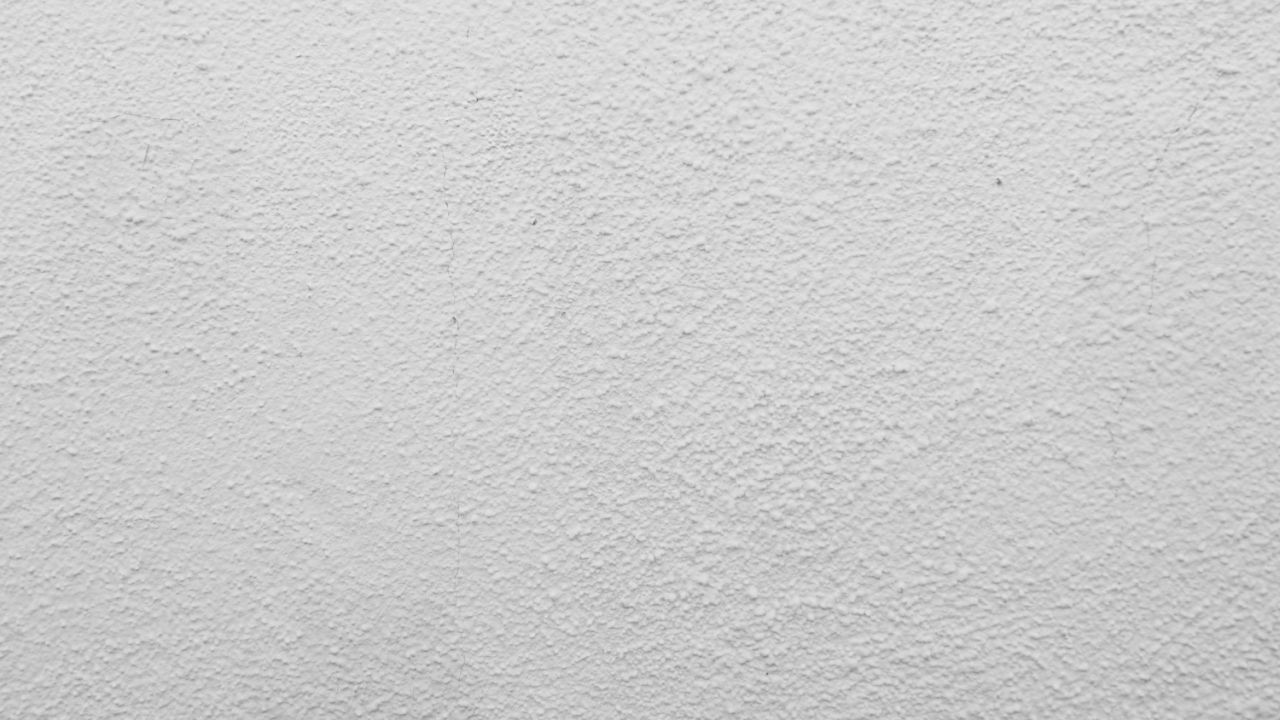
Maintaining a dry, dust-free environment is essential to the longevity of gypsum plaster. Repairing cracks and other damage quickly is important to prevent them from spreading. Avoid cleaning with harsh chemicals or using scratchy tools.
Content Summary
- Interior walls are best done in plaster.
- Plastering the interior of a structure is crucial because it serves both practical and aesthetic purposes.
- The market is flooded with different plastering options, making it difficult to narrow it down to the best one.
- Keep reading to learn about the best plastering methods that may make your home more attractive and practical.
- In general, the best plastering option for interior plastering will be determined by a number of parameters, such as the nature of the project, the available resources, the schedule, and the aesthetic and functional goals of the completed plaster.
- Plastering an interior wall can be done with a variety of different plastering solutions.
- Plaster formed from lime and sand is called lime plaster.
- When repairing masonry, lime plaster is your best bet.
- Commercial and contemporary residential construction frequently employs synthetic plaster.
- Many varieties of plaster are available for use when finishing an interior.
- Because of its resistance to fire, gypsum plaster is another material that can be used for interior plastering.
- Gypsum plaster has a variety of possible textures and finishes.
- When it comes to interior plastering, gypsum plaster is by far the superior option.
- Homeowners and business owners alike favour it because of its convenience, portability, low weight, insulating qualities, fire resistance, and versatility.
- Gypsum plaster is a great option for interior plastering during home renovations or new construction.
- Use a trowel or a plastering machine to apply gypsum plaster in thin layers.
- Depending on the desired thickness of the plaster, you may need to apply additional applications.
- The plaster needs to dry completely once it has been applied.
- Once the surface is dry, you can sand it down to a smooth finish.
- Adding texture or colour for aesthetic purposes can also improve the look of your walls and ceilings.
- Gypsum plaster can be used as a decorative coating for walls and ceilings inside a building.
- The manner of application and the desired aesthetic dictate the choice of finish.
- Plastering your interior walls and ceilings with gypsum plaster will provide a smooth and aesthetically pleasing surface.
- Gypsum plaster may be kept in pristine condition with routine cleaning.
- Any damage to the gypsum plaster, such as cracks, chips, or holes, should be fixed as soon as possible.
- Avoid hanging anything too heavy on walls that are made of gypsum plaster, since this could crack the plaster and need costly repairs.
- Hang pictures on gypsum plaster walls with picture hangers or anchors made for that material.
- If you follow these guidelines, your gypsum plaster should last for many years and continue to look great.
- Gypsum plaster is an eco-friendly building material.
- Gypsum plaster can last for a long time with the right care, but experts advise doing so.
- Cracks and other damage should be fixed as soon as possible to avoid spreading.
- Depending on the severity of the damage, this may include applying a sealer or patching the area with new plaster.
- The use of abrasive cleansers or instruments should be avoided, as this might cause damage to the gypsum plaster.
Frequently Asked Questions About Plasterering Solutions
Plaster walls and ceilings with gypsum plaster, which is made from gypsum powder and water.
Gypsum plaster's drying time is affected by a number of variables, including ambient temperature and humidity as well as plaster thickness. Drying time for gypsum plaster is typically between 24 and 48 hours.
Gypsum plaster is not as long-lasting as cement-based plaster or other exterior finishes, so it is not recommended for use on exterior walls.
Gypsum plaster can be applied at varying thicknesses, depending on the surface being plastered and the desired finish. The standard recommendation for a smooth finish is a coat thickness of 6 millimetres.
After gypsum plaster has dried completely, it can be painted. Applying a primer coat prior to painting is advised for improved adhesion and a more uniform appearance.
